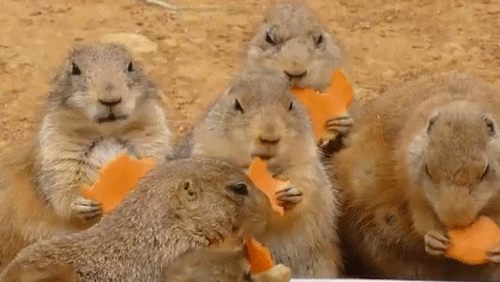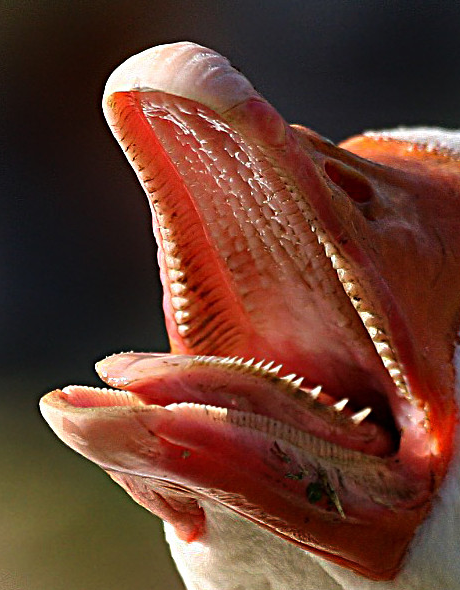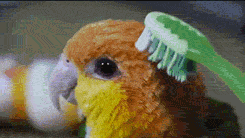Biology concepts – ecology, radiative speciation, talpid, tomia, temperomandibular joint, cranial kinesis, bilateral symmetry, asymmetry
Are there are any birds with teeth? They would be an exception, and that’s what this blog is all about. Maybe they just don’t have a lot to smile about. Birds are edentulous– without teeth.
A single species of plover, the wrybill (Ngutuapore in native Maori language) is rare; only 5000 live on the North Island and fly to the South Island to breed each year. The turned bill is supposed to be for turning stones over and retrieving crustaceans, worms, and insects from the crevices of shore rocks.
Meredith, R., Zhang, G., Gilbert, M., Jarvis, E., & Springer, M. (2014). Evidence for a single loss of mineralized teeth in the common avian ancestor Science, 346 (6215), 1254390-1254390 DOI: 10.1126/science.1254390
Smith, J., Sjoberg, S., Mueller, M., & Benkman, C. (2012). Assortative flocking in crossbills and implications for ecological speciation Proceedings of the Royal Society B: Biological Sciences, 279 (1745), 4223-4229 DOI: 10.1098/rspb.2012.1500
Benkman, C., Parchman, T., & Mezquida, E. (2010). Patterns of coevolution in the adaptive radiation of crossbills Annals of the New York Academy of Sciences, 1206 (1), 1-16 DOI: 10.1111/j.1749-6632.2010.05702.x
SNOWBERG, L., & BENKMAN, C. (2009). Mate choice based on a key ecological performance trait Journal of Evolutionary Biology, 22 (4), 762-769 DOI: 10.1111/j.1420-9101.2009.01699.x
You’ve heard the phrase, “As scarce as hen’s teeth?” Well, you’ve heard it if you’re as old as I. Hens don’t have teeth, so the phrase means something so rare as to be fictitious. Sort of like Will Ferrell’s chances of winning an Oscar.
 |
Chicks don’t’ peck their way out of their shell. They use an egg tooth to pip the shell, putting a small hole in it. This destroys the integrity of the shell, and they can push their way out. |
Most chicks do have an egg tooth, but it’s not really a tooth. An egg tooth is a small growth on the tip of a bird’s beak just before it hatches. The chick’s talons and beak aren’t sharp enough to break through the egg, so the egg tooth does the job. They pipthe outer shell (just break through) and push themselves out.
Of course, that’s how it usually works. There are of course, exceptions. The kiwi bird of New Zealand doesn’t produce an egg tooth. It uses its strong legs – even in the shell they are strong – to kick it’s way out of the shell. A few of the other large birds of Australia do it as well. No teeth here.
There are a few species of birds that look like they have teeth as adults. Anyone who has crossed paths with a Canada Goose with goslings probably knows that they can be toothy trouble makers. Called tomia, geese teeth these look a little like snake teeth; not the fangs, just the teeth. They slope backward to help grasp food.
Tomia aren’t covered with enamel and they don’t have a pulp chamber, so they are definitely not teeth. These serrations (serrated beaks) are made from the same material as the beak itself, and the rubbing of the top and bottom bills keep them sharp. Tomia are good for cutting and grasping, but they are more like fingernails or bone, not teeth.
The common ancestor of all living birds did have teeth, according to new work from UC Riverside. Birds don’t really fossilize well since their bones are so light, so the six genes of teeth production will have to do for study. Did all birds lose teeth in one fell swoop, or did different lines of birds lose teeth independently, at different times?
The researchers found that genes in all birds had the same mutations, so all birds lost their enamel, and therefore their teeth, about 116 million years ago.
Another way we know that the tooth making genes are still there – sometimes they come back! There are chickens that show a certain group of mutations – they grow true teeth. Don’t get too excited, the mutations also kill them before they hatch. The mutation is called talpid, and involves the beta-catenin gene.
A 2006 study showed that teeth of the mutant embryos were very alligator like teeth buds, and turning on beta-catenin in normal embryos brings the same tooth development. Yep, birds used to have teeth and still have them buried deep in their genes.
However, in most birds the upper mandible (our maxilla) can move! The attachment to the facial bones is more complicated in birds than in mammals, the upper mandible attaches to the facial bones via some cartilage, called a syndesmosis joint. There are several types of movement based on just where the upper mandible is attached to the facial bones.
Being able to move the upper jaw is call cranial kinesis (cranial = upper jaw makes up part of the cranium or skull, and kinesis =moving). Snakes are big on cranial kinesis, they need it to eat things bigger than their head. But mammals can’t do it.
As far as birds go, many species move their upper jaw a bit, but the parrots move it the most. This helps then to eat the large and oddly shaped nuts that make up their diet. But oddly enough, they don’t move their lower jaw much side to side. Herbivores do, they have flat back teeth for grinding (see picture below).
Since birds don’t have teeth to chew food, they don’t really need to move their lower jaw laterally very much. This is true for most birds, but there is one exceptional genus of birds that can move their jaws laterally quite a bit - and they have to. Their bills grow sideways and cross each other like scissors!
 |
Herbivores use lots of lateral mandiblular movement to help grind their food. Birds have no teeth, so they don’t move their jaws lateral much at all. |
There are about 5 species of crossbill finches, all of the genus Loxia (Greek for oblique). They are the only birds whose upper and lower bills cross one other. One grows to the right so it can pass the other (which moves to the left). In populations of each species, the dextral individuals (bottom jaw crosses to the right of the upper) are about 1:1 with sinistral individuals (bottom jaw is on the left).
This makes the crossbill bilaterally asymmetric, and the top bill is longer than the bottom, assuring this asymmetry. Why did this crossed bill evolve? It’s based on what they eat. The diet of crossbills consists only of conifer seeds, harvested straight from the maturing cones. Each species dines on the seeds of different conifers, so their bills are slightly different based on what they are digging out.
Each bird attacks the cone based on which type of crossed bill it has, dextral or sinistral. Therefore, each bird can only access about half the seeds of a cone. This is why populations are 1:1 dextral/sinistral – it allows any population to get at all the seeds. If one morph (dextral or sinistral) predominated, some would starve. Having 1:1 ratio allows both morphs to feed maximally.
Different conifers have differently shaped cones. Over evolutionary time, individual differences were maximized until different species resulted. This allows different populations to live in the same area, because they feed on different trees. Called adaptive radiation, Darwin’s finches did it in the Galapagos Islands because of isolation and different foods. Here the crossbill species do it with in the same area to fill different feeding niches.
A study in 2009 showed for the first time that differences in feeding ability of crossbills, based on individual differences (fluctuating asymmetry, will talk more about it in a couple weeks) in bill shape, may be used in mate selection. Those that are able to forage fastest seem to draw the attention of more females, and for longer times.
A second study indicates that differently individuals have different contact calls, and those with the most similar bills would respond best to each other’s calls. This would reinforce mating choice by assortative flocking. Feeding and calling based on bill morphology are two reasons behind ecological speciation in crossbills.
The above evidence of mate selection and radiative adaption suggest that bill shape is genetic, but it isn’t totally genetic. Chicks are born with straight bills, but they bend and cross at some point before the chick is required to search out food for itself. And a 2005 study found no evidence for simple or gender-based inheritance when examining captive bred versus will crossbills. More research is obviously needed.
However, the wrybill has been studied very little, and other wading birds do just as well at turning stones over, so the reason for the bill turn isn't understood. We don’t even know just how or if it is an adaptive advantage. Even if we don't know why it exists, it must play some role – the turn is ALWAYS to the right, and even the unhatched chicks have the turned bill. We’ll have to wait for the next turn in their story.
Next week - if we want to continue talking about bilateral asymmetry, we first have to talk about how males and females look different - well some do. But in animals like spotted hyenas, even the experts can tell the guys from the gals.
Next week - if we want to continue talking about bilateral asymmetry, we first have to talk about how males and females look different - well some do. But in animals like spotted hyenas, even the experts can tell the guys from the gals.
For more information or classroom activities, see:
Tomia –
Crossbill –
Wrybill –
Cranial kinesis –
Radiative adaptation -





